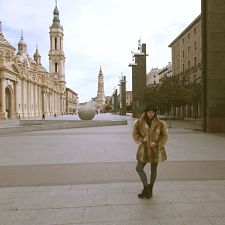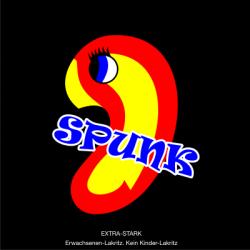The Creator Of Hangman’s Darker Relatives
Hugleikur Dagsson, the controversial cartoonist famous for his satirical comic strips which often depict stick figures in violent situations involving murder, rape, religion, cannibalism, incest and suicide, enjoys huge popularity in Iceland, as well as an international cult following. Apart from his comic strips, he has also published multiple books, written a couple of stage plays, produced his own television show and done some stand-up comedy.
It may be hard to believe, but Hugleikur’s success came almost by accident. As he tells it, he was participating in an art show in Seyðisfjörður during the summer between his second and third year at the Iceland Academy of the Arts. At the time, he thought that the watercolour paintings of sharks and small drawings of exploding airplanes he had submitted weren’t enough, so he panicked and started drawing stick figure jokes as quickly as he could. His first drawings proved a huge success at the show, and it dawned upon him that people appreciated his sense of humour. Soon after, he went on to photocopy them and compile them into books to sell them to friends and family, eventually leaving them at whatever shops would have them.
Since of one of Hugleikur’s images graces this issue’s cover (albeit in slightly reimagined form), one he drew for a fun series we collaborated with him on (“Monsters And Mythical Beings”), we thought we’d check up on the man, how he’s been and what he’s up to. What follows is a slightly edited transcript of our conversation.
Mr. Milk Carton Arms
What inspires your work?
Just everything around me. These days Facebook is a big inspiration, just seeing what people are talking about and finding a pattern in what they’re saying. I started doing this before Facebook, though, back then it was just observing people and watching the news… anything, really.
Do you have a favourite of your own comic strips?
It changes all the time. Today, it’s some cartoon I made about a guy who had this disease that made him look like a Moomin, so kids start following him around. Thinking about it, it’s just because today is the hundredth birthday of Tove Jansson, the woman who created the Moomins. So at the moment, that one’s my favourite, but it changes all the time.
I usually like the ones that aren’t very popular—I’m always surprised at which ones make it, and the ones I like rarely do. For example, I liked this one that made no sense, about a guy who had milk cartons instead of arms. It came from a longing to draw someone with milk cartons instead of arms. So, I did. In it, he’s just talking to another guy and says, “Yeah. I have milk cartons instead of arms.”
It meant nothing, it was just for fun.
Stick-figure dicks
How has your work changed since you first started making comic strips, in terms of content and artistic style?
I guess I tend to think more about it these days. When I started, I used to do it without thinking. It was all just stream-of-consciousness. Now I’m a little more ambitious and less careless, which is a shame because a lot of the great stuff came out of me not caring. But it’s my job now, so I sort of have to care about it.
One reason why I think more about my work these days is because I don’t want to repeat myself. Sometimes, I’ll start drawing a joke before realising that I’ve done it before. Also, it’s less about shocking people these days and more about being relevant, I guess. I think I find myself doing more stuff that is sorta political and kind of addresses political events and stuff like that.
Have you ever slipped into self-censorship when taking your large readership into account, versus what you did when you had a smaller, more grassroots following?
I hope I’m not self-censoring. I guess I was harsher in my earlier years. When I make jokes nowadays, I just publish them instantly on Facebook. But you can’t post certain things on Facebook. I have been blocked for 24 hours on Facebook just for showing stick figure genitalia. Someone reported me, and Facebook blocked me, because you apparently can’t show a stick-figure dick.
What are you working on at the moment?
I’m doing a few things. I’ve recently finished the script for a comic book that I’m not illustrating. This is, like, the third book in a series of comics I’m writing about the end of the world. In each book, the world ends in a different way, and each book has a different illustrator. In this particular book, which will be called ‘Up Down’, the world ends with every human in the planet falling upwards. Gravity stays the same for everything else—only people fall up, and only the people who stay inside don’t fly off into space. The story revolves about the people who are left in the world after gravity turns around. It was a really mind-boggling script to write, because you have to think about how everything is upside down except for the people. The illustrators have already showed me some pages, and they’re beautiful.
How did you think of that?
I don’t know. I think I was just staring at the sky one day and thought: “What if we fell up?” Actually, I think I subconsciously stole the idea from Don Rosa, who drew Donald Duck for quite some time. He was one of the best Donald Duck illustrators. He did a story where everyone fell sideways, so they had to climb up floors. I just turned it 180 degrees. The book will be out this fall, and I can’t wait to see it.
I’m also doing a play. It’s a musical that will open this spring, about the Norse gods, with a focus on Loki, the god of mischief.
Páll Óskar fighting alcoholic zombies on Gay Pride day
What’s the funniest or most interesting reaction you’ve gotten about your work?
The funniest reaction was from a book critic a few years ago. He was so appalled that he wrote this long article about how Iceland should be ashamed of me, and that his dog could draw better pictures than mine. It was so negative that I still kind of think he was kidding and that he was actually being sarcastic throughout. I use his text all the time when promoting my books, even though it was written seven years ago. Aside from that, I rarely get really, really negative reactions. I was kind of hoping I’d be more controversial, but I’m not—at least not in this country.
The most special reaction is a sad story. It was a long time ago when everybody had MySpace pages and I posted a lot of cartoons that were in English. There was this one joke that depicts a girl talking with her father in front of a TV. The girl says to the father, “Daddy, ‘Friends’ is about to start. Can you abuse me after?” It was so long ago that ‘Friends’ was still a thing. There was this girl—I think she was from Estonia or Lithuania—who sent me a message, saying: “That was really funny, because it’s true. That’s what I used to say to my father before he abused me. I used television shows to postpone the abuse.”
That was a horrible thing, but it’s kind of justified everything I’ve been doing.
So what’s next? Any big plans for the future?
I’m just hoping to do more TV. In this apocalyptic series of mine, the second book was about Páll Óskar fighting alcoholic zombies on Gay Pride day and I wrote this comic book and the whole idea came because I wanted to do a movie. My ultimate goal is to one day be able to make a movie based on that, and to have Páll Óskar as himself. But until then, I’ll do more comic books and hopefully more stand-up comedy.
—
A Sidebar About That Painting And Elves And Stuff
By Haukur S. Magnússon
Hi Hugleikur, what can you tell us about your illustration upon which Þrándur’s cover painting is based? Do you remember making it? Did you go through any special thought or work process?
I barely remember doing it. I only know that I drew the Hidden People separately, and then Photoshopped the pictures together. Photoshop is the gateway between our world and the hidden one.
At that time, you were illustrating a series of articles for us, about Iceland’s “monsters and mythical beings.” Was there a creature you enjoyed drawing in particular?
I liked designing these creatures in stick figure form. I used the same design in the comic I did for the phone book. I quite enjoyed drawing Miklabæjar-Sólveig, the suicide ghost that haunted the priest who broke her heart.
What is the ultimate monster, in your opinion?
The Tilberi. That is one fucked up creature. The milk thief, with mouths on both ends. I always envision it like something from a Cronenberg movie.
As we were making the series, you remarked that Icelanders had this treasure trove of myths and monsters that were just begging to be used in thrillers and horror movies, that it was a matter of time until someone made a film about, say, the Nykur or a Skoffín? Now, five years later, are we any closer?
It doesn’t look like it. Not while our government is 70% vegetable. It’s sad, because the possibilities are endless. A horror love story about The Deacon of Dark River [Djákninn á Myrká]. A Gremlins-type movie about Tilberis. A Grýla slasher. A Nykur creature feature. A Miklabæjar-Sólveig frightfest. Sæmundur Fróði is… The Exorcist. Throw me some money and I’ll make them all.
I understand you and Þrándur are cousins, right? Do you feel like you might have similar approaches to art, even though you employ drastically different methods?
We grew up together and drew comics together. We like the same stuff and, yes, our approaches are often similar. We both did Grýla. We both did the merman. We both did Þorgeirsboli. We both did the Norse gods. We’re both covering the mythological flora of Iceland.
We should do a show together.
What do you think of his version of your piece? Does it tell a similar story to yours, or is something lost or added in translation?
I see literally no difference between the pieces. It’s practically the same picture. Are you sure it’s not mine?
Do you have a favourite painting of his?
I have it at home. He painted a scene from Pasolini’s ‘Salo.’ It’s pretty.
Buy subscriptions, t-shirts and more from our shop right here!


















